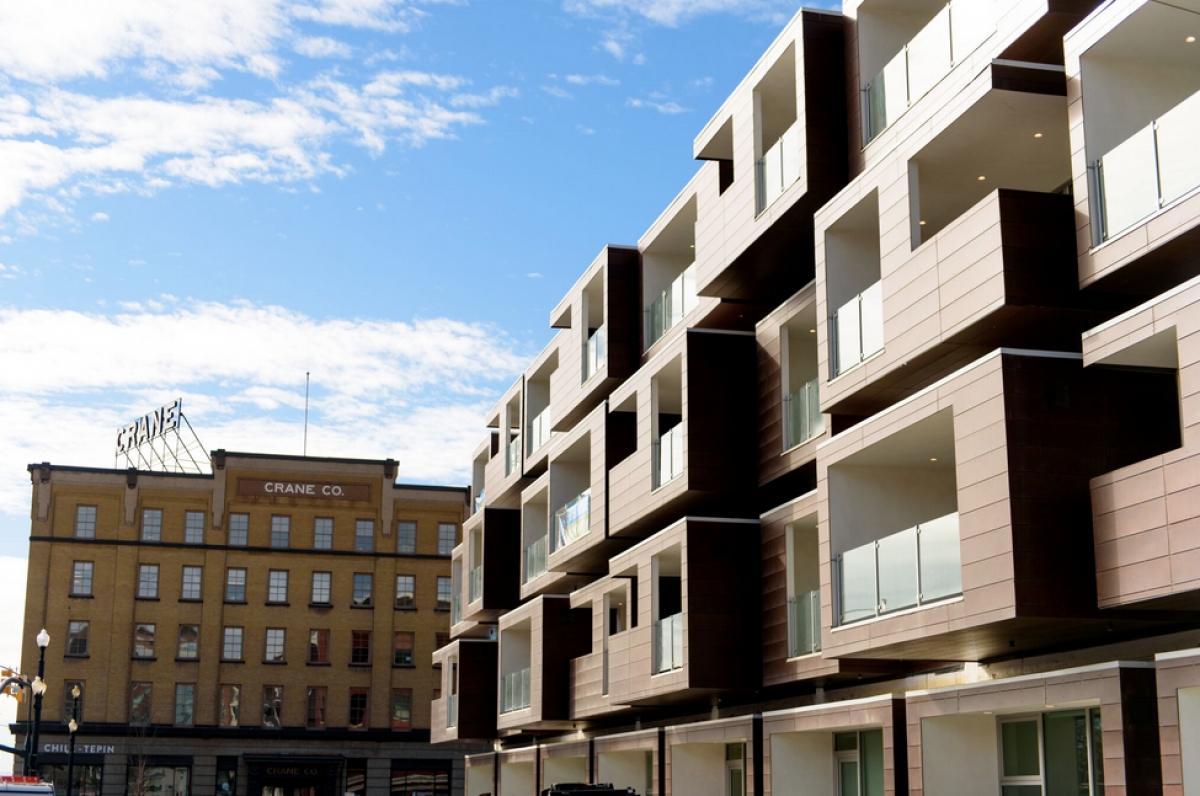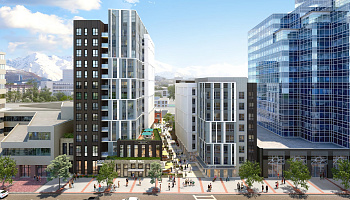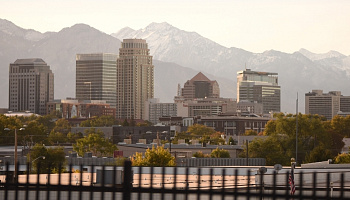In his 16 years downtown, Matt Manes, a graphic designer has experienced several iterations of downtown Salt Lake.
When Manes first moved downtown, the Gateway Shopping Center had just opened. The shopping center, on the western edge of downtown, was the first large mixed-use project to be built downtown in decades and brought hundreds of residents to the area. Over the next several years, the Gateway would also be attributed to the decline of activity on Main Street.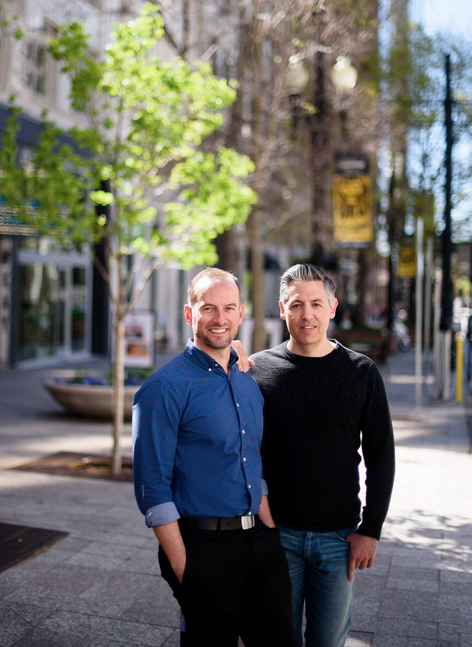
In 2012, a decade after the Gateway opened the energy has moved back to Main Street. It was that year that the City Creek Center opened brining hundreds of new residents and dozens of new retailers back heart of downtown. Four years later the Eccles Theater, a large state of the art broadway style theater, opened a block to the south of City Creek. “The amount of foot traffic on Main Street is four times what it used to be,” said Manes. Downtown Salt Lake is growing at an unprecedented rate. According to U.S. Census data, in 2010 downtown had a population just over 5,000 people. Since 2010, several hundred of residential units were added with many more in development.
After decades of decline, residential development began to return to downtown Salt Lake City in the 1990s. Between 1990 and 2010 the urban core grew by 59 percent between. But a hot economy and younger work force, demand for living downtown is bringing exponential growth to Salt Lake. According to a 2016 downtown housing report by the Kem C. Gardner Policy Institute, between 2010 and 2020 downtown will have added more residential units, than what was built in the past 100 years combined. Just under half of the city’s 4,800 residential units under construction are in downtown with over 2,200 residential units under construction in the central business district with nearly 800 units expected should start construction in the next year. City officials expect the downtown population to double by 2020 and quadruple in size by 2040.
New commercial office buildings like 111 Main, the 24-story tower just south of City Creek, are bringing hundreds of new workers downtown and according to David Lang, the head of the Goldman Sachs Salt Lake Office, many of those workers want to live downtown. Goldman Sachs, is the anchor tenant of 111 Main and, another 20-story building a block to the south, 222 Main. Salt Lake is Goldman’s second largest office in the Americas, after New York City, and fourth largest in the World. In both buildings, Goldman has close to 2,300 employees working downtown.
“Being in the heart of downtown is a huge draw for us,” said Lang, at the ribbon cutting ceremony for the 111 Main building in 2016. In that ceremony, Lang told the crowd that his company’s younger workforce “wants to live, work and eat downtown” and is driving the company’s commitment to downtown Salt Lake. According to Lang, Salt Lake is one of Goldman Sachs’ most requested transfer locations. To Manes and his partner, Mark Morris a landscape architect and urban planner, it is downtown’s walkability, amenities and young and diverse community that makes it their preferred residence. The couple has lived together downtown for the past five years. In 2012, the couple sold their home in the Sugar House neighborhood and bought a two-bedroom condo in the Regent building in the City Creek Center.
“Living downtown we can walk to almost everything we need,” said Mark Morris. In a block radius of the couple’s condo is a shopping center, dozen of restaurants, the Eccles Theater, a TRAX light rail station and a large grocery store, Harmons Grocery on 100 South near State Street. Both Manes and Morris work downtown and either walk or bike to work. The couple shares a car that they use to visit family or explore Utah’s outdoors.
While Morris and Manes enjoy living near Main Street, the couple would like to see the street’s vibrancy expand to other parts of downtown. “The best part is to be able to walk out your front door, get on a train and be at the airport in 15 minutes,” said Manes. “I wouldn’t live anywhere else in Salt Lake.”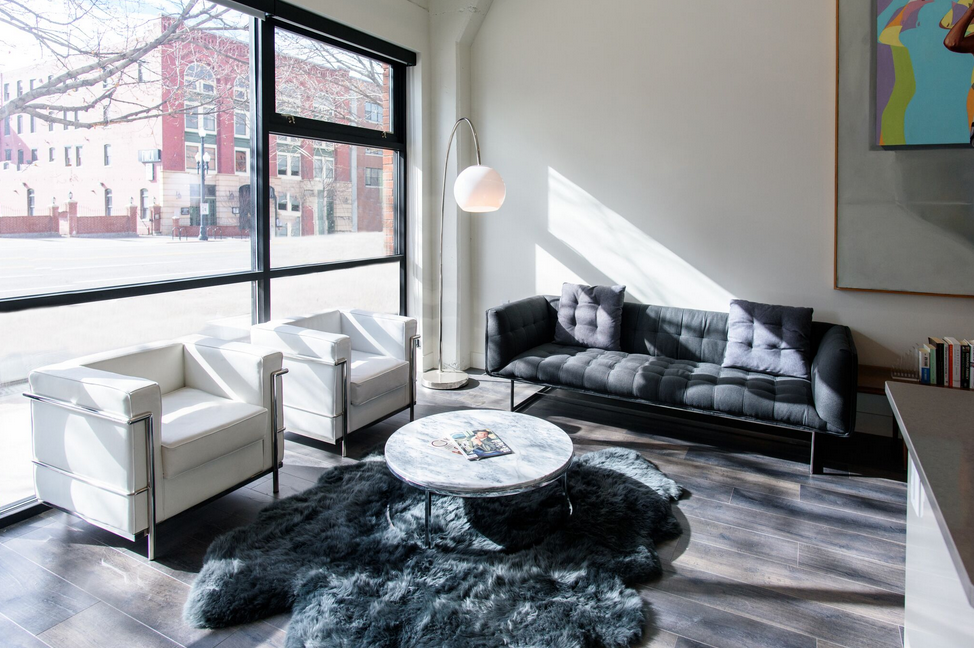
For Blake McClary and his wife, Amy McDonald, downtown is the only place they want to be. The couple has been married for two years and are raising their ten month-year old daughter in the City Creek Apartments. McClary is a reverse commuter. While he lives downtown, he commutes to Cottonwood Heights were is a project manager for a technology company. “I do miss the five-minute bike ride, but nowadays people aren’t work at companies very long so why would I want to move to the suburbs if I don’t know if I’m going to be there in the next three years,” said McClary. “This is where we want to be, the place we’d love, I’d rather live here and commute where ever else I need to be.”
The couple would eventually live in a neighborhood close to downtown like the Marmalade, a neighborhood directly north of downtown. For the couple, the Marmalade neighborhood is ideal with because of the area’s diversity and amenities like the Marmalade Library and Washington elementary school. “We’d eventually want to have a house with a yard,” said McClary. But for now the couple is very happy with where they live. Both attribute the walkability, dining scene, arts and entertainment and diversity as reasons that keep them downtown. “Where you live isn’t just about where you work. There is so much more to our lives than where we work,” said McDonald. As downtown continues to evolve, the couple would like to see an elementary school downtown, more playgrounds and green space and better east to west transit connections.
Both couples cited the access to nature via Memory Grove Park and City Creek Canyon as a key amenity to downtown living. The park and canyon are within walking distance from downtown allowing residents to go from downtown to the mountains in minutes. With citywide vacancies rates hovering around 3 percent, city officials and local developers expect the downtown housing market to continue its upward climb for the next few years.
“We are very pleased with how rents have grown for us. We expect rents upward pressure on rents for the next year or two,” said Thomas Vegh of Salt Development. “We see continued rental growth with a continued influx of more workers with Millennials and Boomers that want to live downtown. I think this is going to be a very exciting time to live downtown.”
Salt Development is building a large mixed used development a block to the north of the Gateway. The project called Hardware Village will add over 900 residential units in three residential buildings.

